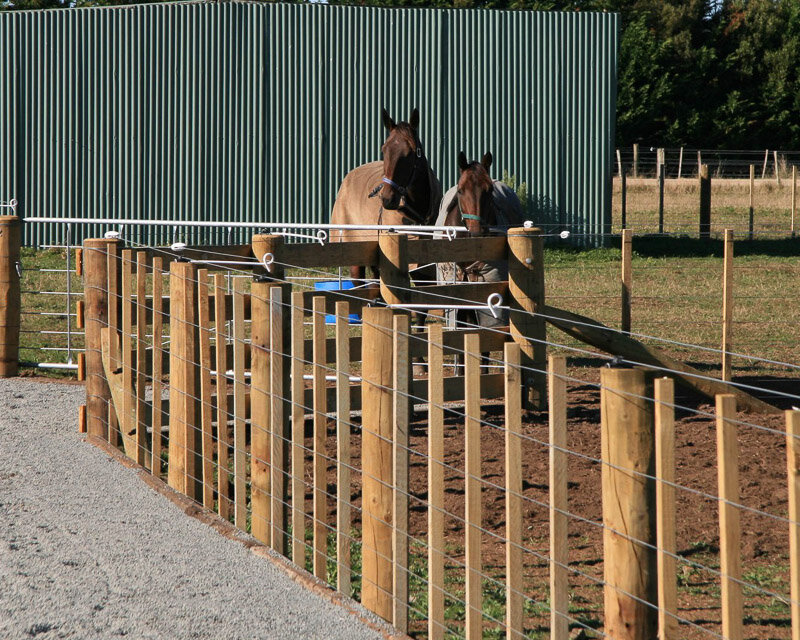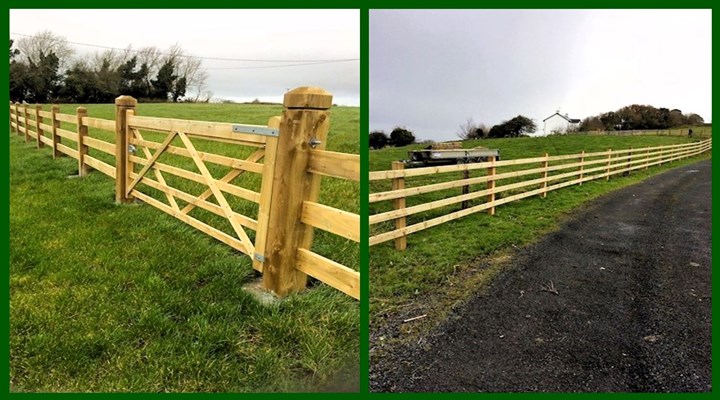A Comprehensive Overview to Fencing Install: What You Required to Find Out About Secure Fencing Solutions
When it comes to setting up a fencing, you've obtained a great deal to contemplate. From choosing the right products to understanding regional guidelines, each action can feel overwhelming. You'll need to assess your building and decide if you wish to deal with the installment on your own or hire an expert. However that's simply the start. Let's explore the important variables that can make or break your secure fencing job.
Understanding Different Types of Secure Fencing Products
When you're choosing a fencing, comprehending the various kinds of fence materials is important. Each material provides distinct advantages and disadvantages, impacting your choice. Wood offers a timeless look and can be customized, yet it calls for routine upkeep and might rot gradually. Vinyl is low-maintenance and long lasting, resisting fading and parasites, however it can be more expensive upfront. Chain-link fence is cost-effective and functional for confining huge areas, though it lacks personal privacy and aesthetic appeal. Steel fencing, like functioned iron or light weight aluminum, uses strength and sophistication but may require rust security. Compound products blend the most effective of wood and plastic, providing sturdiness with an all-natural look. Consider your budget plan, desired appearances, and maintenance preferences when assessing these options. Eventually, choosing the appropriate product will certainly aid you produce a fencing that fulfills your demands and boosts your home's value.
Analyzing Your Building and Fencing Demands
Before you start your fence setup, it's important to analyze your building borders and the purpose of your fencing. Recognizing local laws and authorizations will certainly additionally help you stay clear of any kind of lawful problems down the line. By considering these elements, you'll assure your fence meets both your needs and community requirements.
Property Boundaries and Lines
Recognizing your residential property borders is important for a successful fence installment, as it not just helps you identify where your fencing will certainly go but additionally ensures you're appreciating your next-door neighbors' space. Start by evaluating your building action or survey, which usually outlines the exact limits. You may likewise wish to seek advice from a professional surveyor if you're unclear.
When you've developed your borders, mark them clearly with risks or flags. This aesthetic help will certainly assist you during the setup and prevent any kind of disagreements with neighbors. Keep in mind, regional zoning regulations might determine fencing positioning and elevation, so examine those laws too. Taking these steps warranties your fencing is effectively positioned and compliant, making the entire procedure smoother for you.
Objective of Secure Fencing
Third, fence can specify your home borders, making it clear where your space finishes and your next-door neighbor's begins. A well-placed fence can help handle noise from neighboring roadways or next-door neighbors and even maintain animals and kids secure. By assessing your certain needs, you can select the ideal kind of fencing to accomplish these benefits successfully.

Local Regulations and Permits
How can you assure your fence installment adheres to local laws? Beginning by consulting your neighborhood zoning office or local web site. Fence Company. They usually have guidelines regarding fence elevation, products, and placement. You'll also want to discover if you need a license prior to starting your job. Some locations call for licenses for any brand-new fencing, while others might only require them for taller frameworks.
In addition, take into consideration home lines and any easements on your land. Noting your limits can protect against disagreements with neighbors or prospective legal issues. By recognizing these laws upfront, you can prevent costly errors and ascertain your fence is developed to last, boosting both your residential property's worth and your satisfaction.
Local Regulations and Permits for Secure Fencing
Before you begin your fence job, it's important to inspect local guidelines and acquire any kind of necessary licenses. Each city or region has its very own guidelines concerning fencing height, products, and placement. These regulations assure that your fencing abides by safety requirements and community looks.
You might require to submit a fence plan, outlining measurements and materials. Some areas might also need a study to confirm property borders.
Disregarding to adhere to these laws can cause penalties or required removal of your fencing, squandering both time and cash. So, make the effort to research and protect the appropriate licenses for a smooth installation process. This visit the website action is crucial in making certain your job straightens with regional regulations and area standards.
Choosing Between DIY Setup and Expert Providers
Are you thinking about whether to tackle the fencing installation yourself or employ an expert? This choice depends upon a number of variables. First, examine your skill level. If you come in handy and have experience with similar jobs, do it yourself could conserve you cash. Be honest concerning your capabilities; errors can lead to additional costs and headaches.
Setting up a fencing takes time, and if you're juggling a hectic timetable, employing a specialist can guarantee it obtains done successfully. If your yard has tough surface or specific design requirements, experts bring competence that can make a difference.
Lastly, consider neighborhood policies. An expert understands the licenses and codes needed, aiding you prevent potential fines. Inevitably, evaluate your abilities, time, complexity, and laws to make the most effective choice for your secure fencing task.
Step-by-Step Overview to Fencing Installment
As soon as you have actually made a decision to move ahead with your fencing installment, adhering to an organized detailed method will ensure a smooth process. Begin by noting the fencing line with risks and string to picture the format. Next off, inspect local laws to validate compliance with height and building lines.
Dig blog post openings at least 2 feet deep, spaced according to your fence kind-- typically 6 to 8 feet apart. Place the blog posts right into the openings and fill them with concrete for security. When the blog posts are set, attach the horizontal rails or panels, ensuring they're degree.
Check for any loosened connections and make necessary adjustments. Your fence ought to now be ready to boost your residential property and give the personal privacy or safety and security you require!
Upkeep Tips for Longevity of Your Fencing
To maintain your fencing looking fantastic and lasting much longer, normal maintenance is crucial. You should establish a cleansing routine, check for any kind of damage, and apply safety layers as needed. By staying proactive with these tasks, you'll guarantee your fencing remains strong and eye-catching for years to find.
Normal Cleansing Schedule
Beginning by rinsing your fence with water at the very least when every season to get rid of dust and particles. Do not fail to remember to check for any kind of rust on steel fences; a cable brush can assist eliminate it, complied with by a layer of rust-resistant paint. Maintaining your fence clean not just enhances its appearance but likewise prolongs its life, conserving you cash in the lengthy run.
Inspect for Damage
Frequently inspecting your useful content fencing for damage is essential if you wish to keep its stability and longevity. Beginning by walking your fence to try to find noticeable indications of wear, such as splits, loosened boards, or corrosion. Pay unique attention to the base and messages, where dampness can cause considerable concerns. If you discover any type of damage, keep in mind and establish the seriousness of fixings. Addressing little concerns promptly can prevent them from rising right into bigger, a lot more costly troubles. Look for any indicators of parasites, like termites or woodpeckers, that could compromise your fence's framework. Lastly, validate that your fence remains stable by checking for any kind of leaning or drooping sections. Normal assessments will keep your fence looking excellent and operating correctly for years to come.
Apply Safety Coatings
After evaluating your fence for damage, applying protective coatings is a vital step in guaranteeing its longevity - Fence Contractors. If your fence is plastic or metal, consider a UV-protective spray or paint to avoid fading and rust.
Make certain to clean the surface extensively before application, as dirt and crud can threaten the coating's efficiency. Use the coating in dry weather condition for far better attachment, and don't forget to adhere to the supplier's instructions for the finest results. On a regular basis reapply every few years to keep your fence looking great and standing strong versus the components.
Expense Factors To Consider and Budgeting for Your Fencing Job
When planning your fence job, understanding expense considerations is important to staying within budget. Begin by figuring out the type of product you desire, as prices can vary substantially between timber, plastic, and steel. Don't neglect to variable in labor expenses-- hiring experts could conserve you time yet can increase your general costs.
Following, measure your home to determine the linear footage needed, as this straight impacts material prices. Furthermore, take into consideration any type of permits you may need, which can contribute to your budget plan.

Last but not least, it's an excellent idea to set aside a backup fund for unanticipated costs. By intending very carefully and taking into consideration these variables, you can create a sensible spending plan that meets your secure fencing requires without breaking the financial institution.
Frequently Asked Questions
The length of time Does the Typical Fence Installation Take?
The standard fencing setup usually takes one to 3 days, relying on the fence kind and size of your yard. You'll require to think about any kind of hold-ups due to weather or permit demands too.
What Should I Do if My Fencing Is Damaged?
If your fencing is damaged, initially analyze the degree of the damage. Repair minor problems yourself, yet for major troubles, think about contacting a professional. Don't wait too long; it'll aid protect against better problems.
Can I Mount a Fence on a Slope?
Yes, you can install a fencing on a slope. You'll need to adjust your installation approach, either browse this site by tipping the panels down or utilizing a racked style to guarantee stability and proper alignment with the terrain.
What Are the most effective Practices for Fencing Paint?
To paint your fencing properly, begin with appropriate cleaning and sanding. Use top quality paint and use in even strokes. Don't fail to remember to choose the right weather for painting, guaranteeing it's completely dry and mild.
Exactly how Typically Should I Inspect My Fencing?
You need to check your fence at least two times a year, concentrating on indicators of damage, rot, or rust. Routine checks assist you catch problems early, guaranteeing your fence remains durable and visually appealing much longer.